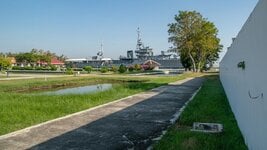GrauGeist
Generalfeldmarschall zur Luftschiff Abteilung
Excellent photos and descriptions, Grant!
Thanks for taking us along on your walkabout.
Out of curiousity, are you and Rob in ol' Siam at the same time?
Thanks for taking us along on your walkabout.
Out of curiousity, are you and Rob in ol' Siam at the same time?

